A well-designed walkway is more than just a practical path from one point to another—it’s a statement piece that enhances the beauty, functionality, and value of your outdoor space. Whether leading to your front door, meandering through a garden, or connecting backyard features, a thoughtfully designed walkway sets the tone for the entire landscape.
Walkways provide structure to a yard, guiding foot traffic while adding aesthetic appeal. The materials, layout, and decorative elements you choose can create a welcoming and visually engaging experience for visitors. With the right design, a walkway can transform an ordinary yard into a cohesive and charming landscape.
In this blog post, we’ll explore seven essential tips for designing a beautiful walkway. From choosing materials to incorporating lighting, these expert insights will help you craft a path that is both functional and visually stunning.
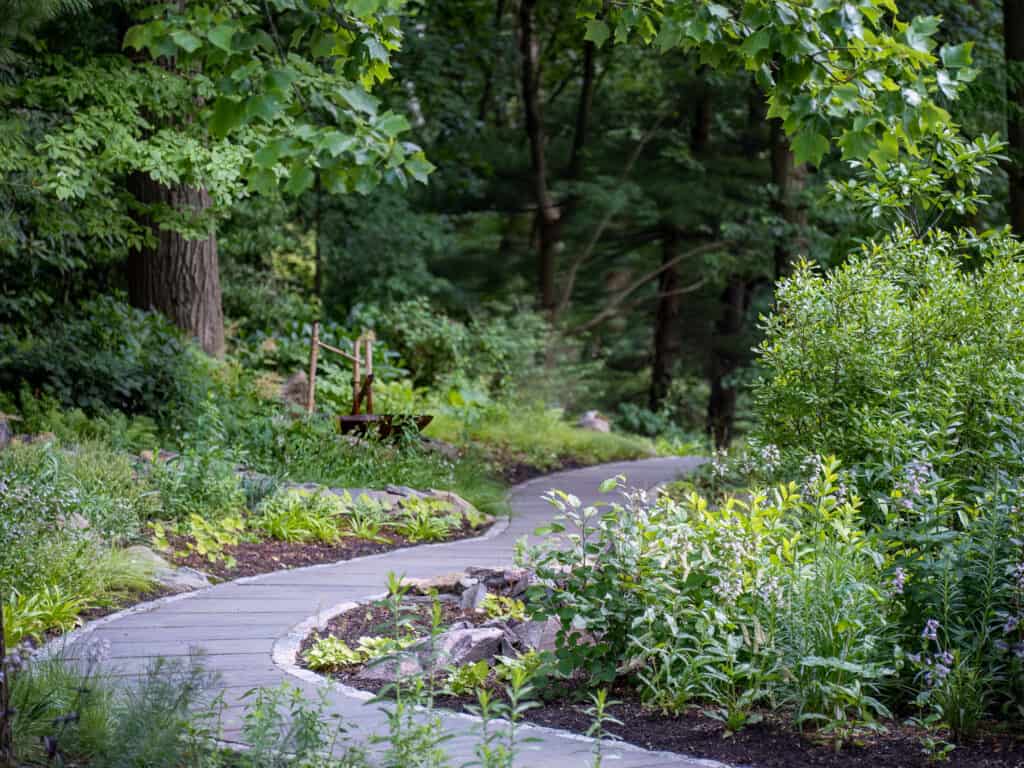
Define the Purpose and Path: The Foundation of a Great Walkway
Before selecting materials or patterns, it’s crucial to determine the purpose and direction of your walkway. Walkways serve different functions—some are purely decorative garden paths, while others provide direct access to entryways, patios, or outdoor features. Understanding the purpose of your walkway will influence its width, layout, and material choices.
A walkway leading to the front door should be wide enough to accommodate two people walking side by side comfortably. A meandering garden path, on the other hand, can be more narrow and winding, creating an intimate, exploratory experience. Consider how you want people to move through your space and where the most natural path would be.
The shape of your walkway plays a significant role in its overall aesthetic. Straight walkways convey formality and directness, making them ideal for modern or traditional homes. Curved and winding paths feel more organic and blend well with natural landscapes. Mapping out the path beforehand ensures a seamless integration with your yard’s layout.
Once you’ve determined the ideal placement and shape, consider how the walkway interacts with the rest of the landscape. Think about existing trees, garden beds, and other features that can either complement or obstruct your desired path. Planning ahead will save time and effort while ensuring a well-balanced design.
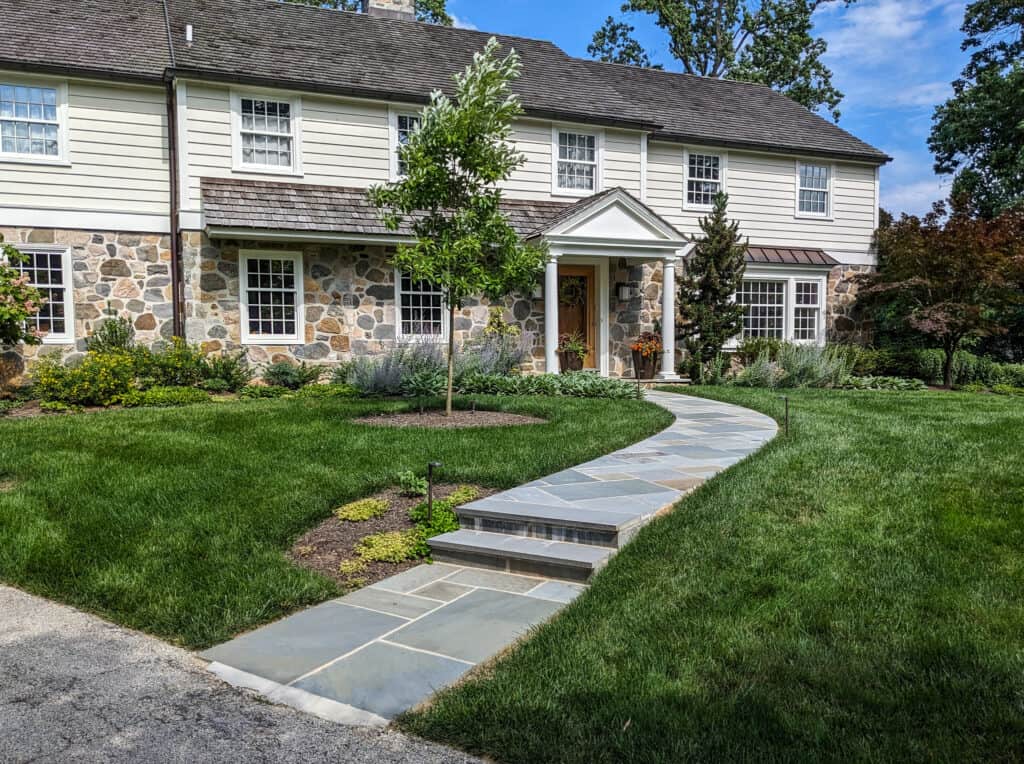
Choose the Right Materials: Beauty Meets Durability
The materials you select for your walkway will define its appearance, durability, and maintenance needs. With so many options available—ranging from brick and pavers to gravel and natural stone—choosing the right one requires careful consideration of style, climate, and usage.
Brick and pavers are popular choices for walkways due to their classic look and durability. They provide a clean, uniform appearance that works well with both traditional and contemporary homes. Additionally, they’re easy to repair, as individual pieces can be replaced if damaged.
Natural stone, such as flagstone or bluestone, offers a more organic and rustic aesthetic. These materials blend seamlessly with surrounding greenery and create a timeless, elegant look. However, they can be more expensive and require a professional installation to ensure stability.
For a budget-friendly option, gravel walkways are easy to install and provide a charming, casual feel. They allow for excellent drainage and can be paired with edging materials to maintain structure. However, they may require more maintenance, as gravel can shift and spread over time.
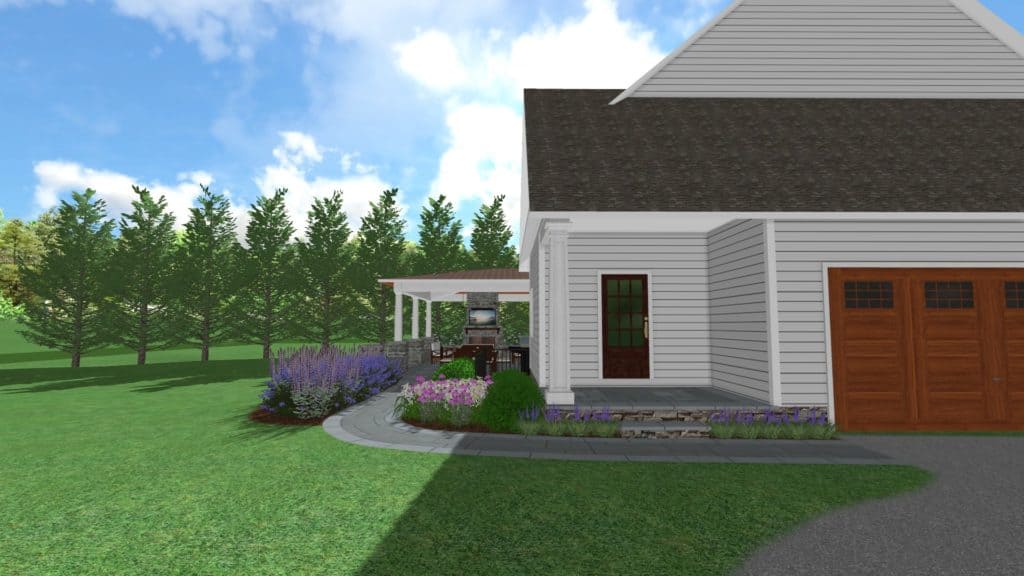
Consider Walkway Width and Proportion: Finding the Perfect Balance
Walkway width and proportion are key elements in designing a functional and visually appealing path. A walkway that is too narrow can feel restrictive, while one that is too wide may overpower the surrounding landscape.
For primary walkways—such as those leading to the front door—a width of at least 3 to 4 feet is recommended. This allows two people to walk side by side comfortably. Garden paths and secondary walkways can be narrower, around 2 to 3 feet, depending on their intended use.
In addition to width, proportion plays a crucial role in ensuring your walkway complements the scale of your home and yard. A long, grand entrance walkway should have a wider path to maintain balance, while a smaller backyard walkway can be more modest in size.
Adjusting the width at key points along the path can create visual interest. For example, slightly widening the walkway at an entrance or seating area can make the space feel more inviting. Thoughtful planning ensures the walkway enhances the landscape rather than overwhelming it.
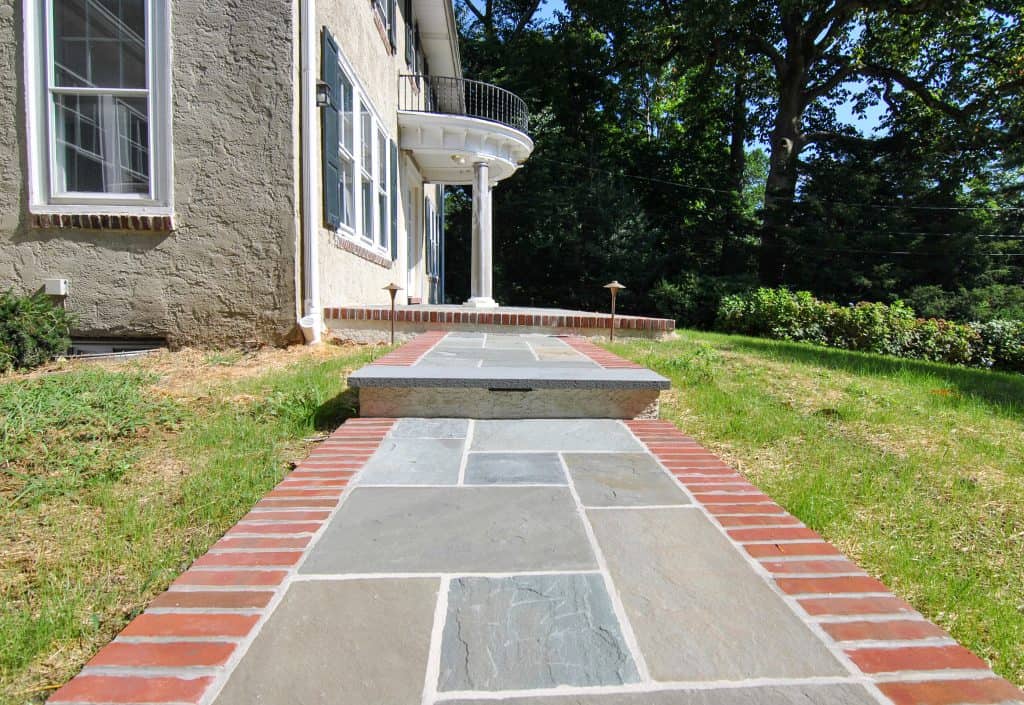
Incorporate Edging and Borders: Defining Your Walkways Character
Edging is an often-overlooked detail that can elevate the look of a walkway while providing structural integrity. By defining the edges, you prevent materials from shifting and create a polished, finished appearance.
Various edging materials can be used to complement your walkway’s style. Brick, stone, and metal edging add a structured, clean look, while natural elements like plants or decorative mulch create a softer transition into the surrounding landscape.
Beyond aesthetics, edging also serves a functional purpose. It helps contain gravel or loose stones, preventing them from spreading onto adjacent surfaces. For paved walkways, edging can reinforce the design and maintain stability over time.
Experiment with different edging styles to find the perfect fit for your walkway. A contrasting border can add depth and dimension, while a seamlessly integrated edge keeps the focus on the path itself. The right choice will enhance both the beauty and longevity of your walkway.
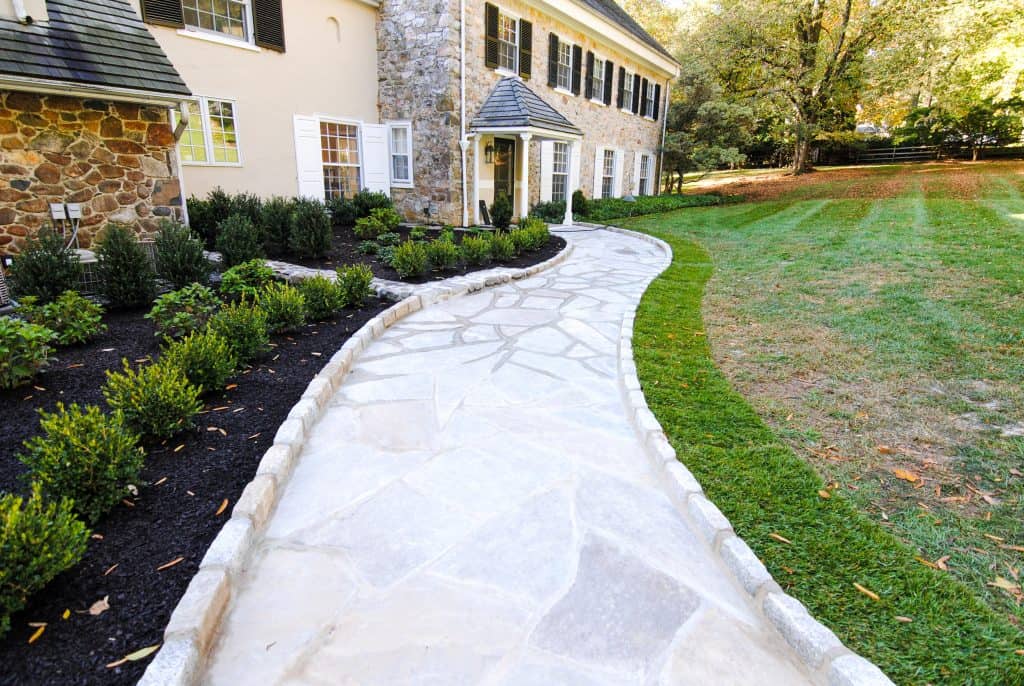
Enhance with Lighting: Beauty and Safety After Dark
Outdoor lighting is essential for both safety and ambiance, ensuring your walkway is usable and inviting even after the sun sets. Properly placed lighting enhances visibility, highlights design elements, and adds a warm, welcoming glow.
Solar-powered lights are a popular choice for walkways, as they are easy to install and energy-efficient. They can be placed along the edges of the path to provide subtle illumination. Low-voltage LED lighting offers a brighter option with greater customization in terms of color and intensity.
For a dramatic effect, consider embedding lights into the walkway itself or using lantern-style fixtures for a charming touch. Motion-activated lights provide additional security by illuminating the path only when needed.
Strategically placed lighting not only improves safety but also highlights the walkway’s materials and surrounding landscape. The right combination of light fixtures can transform a simple path into a stunning night time feature.
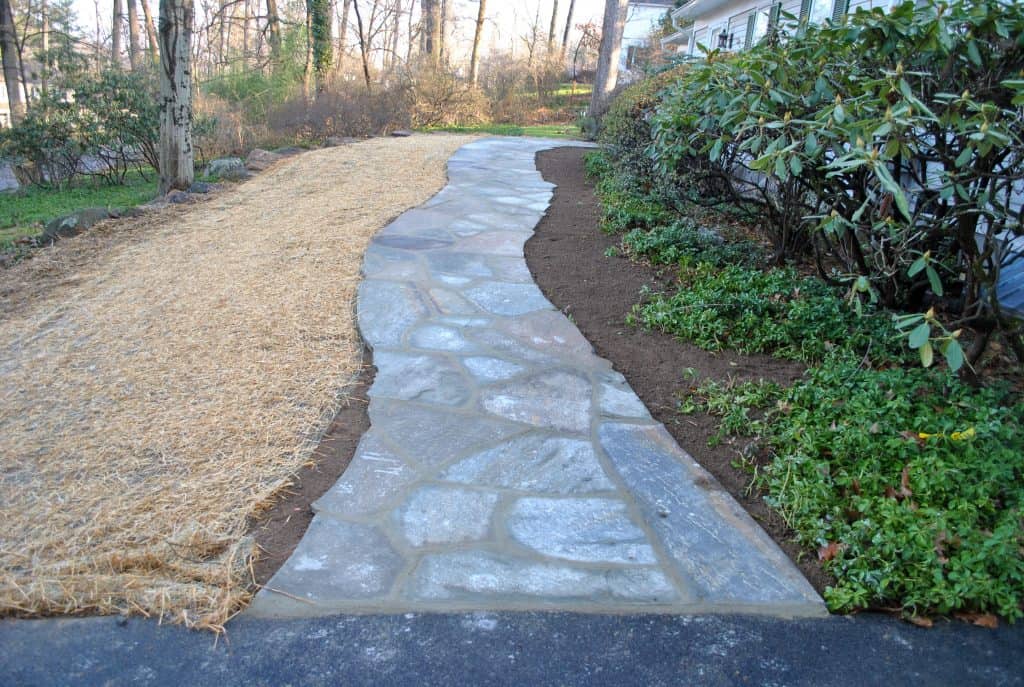
Answering Your Walkway Design Questions
- What is the best material for a low-maintenance walkway?
Pavers and concrete are the best options for durability and low maintenance. - How wide should my walkway be for comfortable use?
A minimum of 3 feet is recommended for a primary walkway, while garden paths can be around 2 feet wide. - Can I install a walkway myself, or should I hire a professional?
DIY is possible for gravel and paver walkways, but professional installation is recommended for stone or concrete paths. - How do I prevent weeds from growing between pavers or bricks?
Use polymeric sand or a weed barrier to minimize weed growth. - What are some budget-friendly walkway materials?
Gravel and concrete are cost-effective options that still provide great aesthetics.
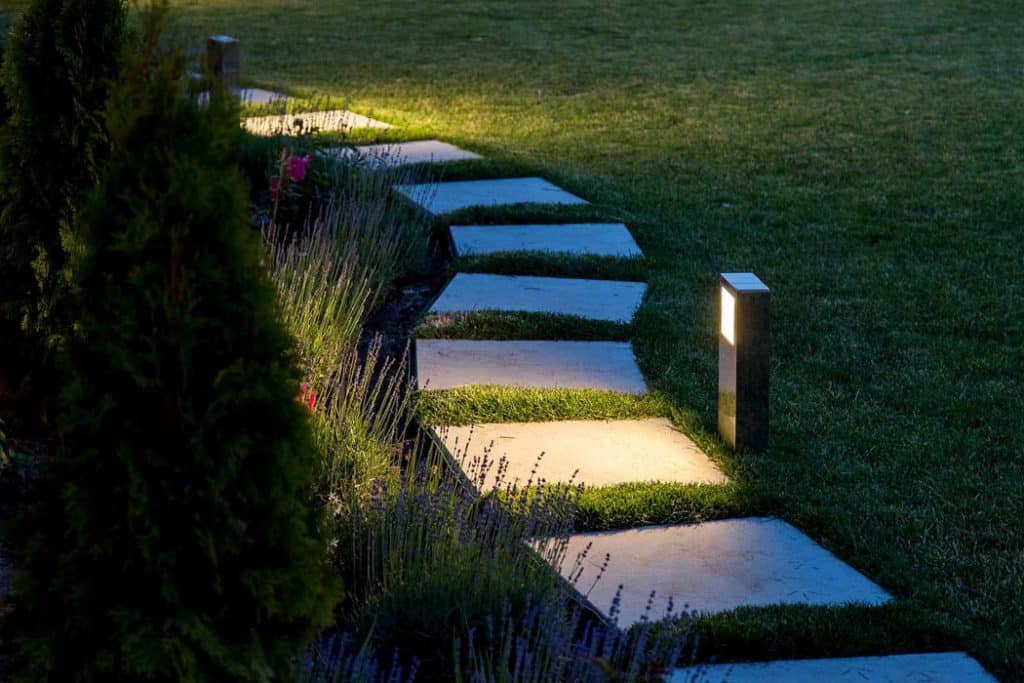
Let the Experts Craft Your Perfect Walkway
Designing a beautiful walkway requires thoughtful planning, the right materials, and expert execution. Whether you’re creating a grand entrance or a charming garden path, the key is to balance functionality with aesthetic appeal.
If you’re ready to upgrade or repair your walkway, Kelly Masonry is here to help. Their expert team specializes in walkway design, installation, and repairs, ensuring your path is both stunning and long-lasting.
Take the first step toward enhancing your landscape—contact Kelly Masonry today for a consultation!
